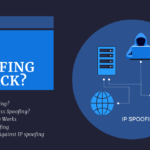Phishing attacks are a scam that aims to steal confidential data through a set of methods. It has appeared since the time of the Internet. Fraudsters, in all forms, try to steal your data. To avoid this, we want to provide you with some rules on how to protect yourself. See below:
- Verify a Site’s Security. Try to be more careful about this. When you enter your data into the network, be it financial or personal data, check the site where your data will remain. So the first thing to look at is how the site URL is written; usually, it should start with “HTTP”, then a locked lock icon should be the address bar. Also, it is not superfluous to check the presence of a site security certificate. Be careful of malicious programs. They can squeeze into your PC through unverified links and sites, do not be fooled by advertising that offers cheap products or quick earnings, be careful.
- Check Your Online Accounts Regularly. Everything depends on you. Suppose you monitor your bank accounts and statements, check passwords, sometimes even change passwords, and put two-factor authentication on your social media and emails. In that case, you have a minimal chance of falling for the scam. Remember to use a strong password that is hard to crack, this is important.
- Think Before You Click! Do not click on everything you see online. There is a mass of cybercriminals on the Internet who work through ads, pop-ups, and links saying that you urgently need to protect your PC from viruses and others. Fraudsters know many typical phishing methods to deceive you. They disguise their emails under some companies and perhaps even familiar sites. But before you go to the specified address, move the cursor to the link line and see if it will take you to the place mentioned in the sentence.
- Keep Informed About Phishing Techniques. Be always on your guard. Watch and search for new methods of phishing scams and watch the news about what is happening in cybercrime. Fraudsters invent sophisticated ways every day to trick you. Don’t let them do it. Check everything and protect your data.
- Use Firewalls. You need to use similar firewalls to reduce the risk of hackers infiltrating your computer. How It Works: A firewall is a wall between you, your computer, and external intruders. There are two types of Firewalls: desktop (software) and network (hardware). It would help if you used them because they work together, giving you more guarantees.
- Be Wary of Pop-Ups. It is another kind of phishing scam. Be careful to appear quiet on legitimate websites and mask as a typical offer from the same site, do not click on the suggested links. If you want to close this pop-up window, click on “X,” but not on the word “Cancel”; it can be a decoy for switching to malware. So remind yourself of the facts about adware attacks and pop-ups.
- Use Antivirus Software. Install antivirus software. It will protect you from intruders. After installation, do not forget to update the antivirus software. New updates will help detect new fraudsters’ methods, so do not neglect this—Use a Firewall, which will block attacks. Also, do not forget about anti-spyware. Antivirus software scans every file on your computer, so you will easily avoid damaging your operating system.
- Never Give Out Personal Information. Do not enter your confidential data to the received link via email. That’s incorrect and wrong. If you need to enter financial data, call the site, clarify all the details, and make sure you speak with an official company employee. Only then transmit any information about your card, but it can only be the card number and the incoming confirmation code from the bank about some payment. Only you should have the password to the card.
- Keep Your Browser Up to Date. This item you should remember and apply. Once a new update is released, install it. This protection is a response to some new methods of cheating intruders.
- Install an Anti-Phishing Toolbar. This toolbar can warn against phishing sites. It’s elementary. Install a phishing fraud protection toolbar on the PC, after which every time you visit a site, the program will scan the data of this site and warn you whether it is dangerous. The program checks the site you need with the list of phishing sites; if it is not included in this list, you can safely use this website.
Types of Phishing Attacks
The most dangerous types of phishing attacks should be avoided and know the steps to solve the problem. The main target of phishing is usually personal information such as credentials, full name, phone number, and email address.
- Spear phishing. The purpose of this phishing is specifically for you. Intruders who work by this method already know something about you. They have part of your data; it’s your name, residence, knowledge of some language, your place of work, and so on. In this case, in a letter, the offender addresses you, for example, by name and surname, and confides you to himself.
- Smishing and vishing. This subtype is similar to the case with email, only here, the fraudster works via text message. The attacker sends you a false text message stating what happened to your card, and you should follow the link to prevent it. The attacker is waiting for you and wants to steal your card details.
- Email phishing is one of the most common phishing scams. The fraudster masquerades as an official company, replacing its domain and sending out vast counts of requests.
- Angler phishing. In this attack, the attacker works through fake URLs, tweets, posts, and Websites to steal confidential data or download malware on the user’s PC. Sometimes fraudsters can use user data through their social media postings for narrowly targeted attacks.
- Whaling. These attacks are directed at the highest levels of society. The ultimate goal of this phishing attack is the same as the others, only the methods here are different. In his letters, the fraudster attempts to identify himself as your director or some important person to convince you of his evil intentions.
How to protect your PC from Phishing Scams?
We mentioned earlier that we should get anti-malware to warm ourselves against Phishing Scams. We suggest you consider protection from GridinSoft Anti-Malware. Install this protection on your PC, it will only take a few minutes of your attention, and in the future, you will not need to experience intruder penetration into your personal space.




